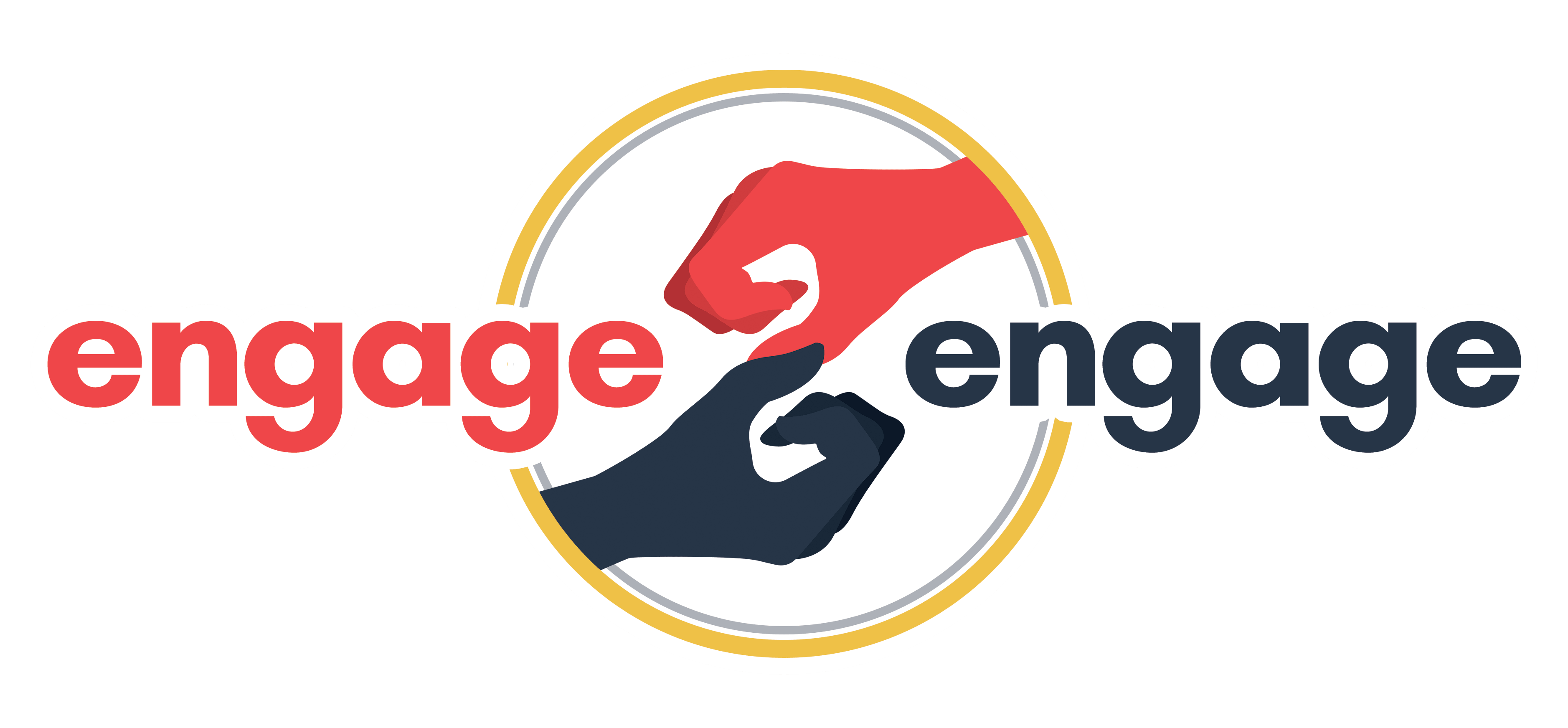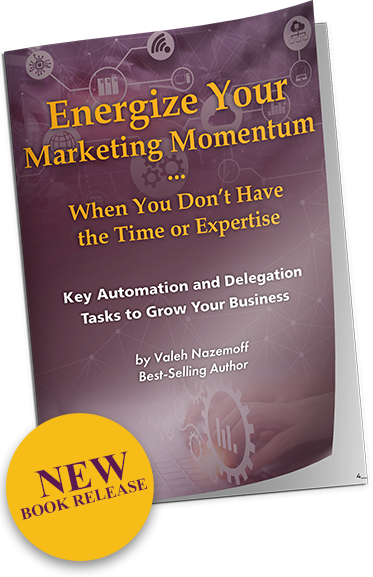Converting Prospects Organically Online Using Engaging and Meaningful Conversational Techniques
All business owners like to believe that the product or service they offer speaks for themselves. All one needs to do to be instantly sold is to click on the website, read a few blurbs of text, and be ready to commit. One day, someone simply decided they needed a specific service or product, searched for just that, and then landed on the golden page. This is the very nature of an organic lead.
It is worth noting that organic searches make up roughly 53% of all web traffic. Still, actually getting people to convert requires a little something extra. In this article, we will explore how having engaging and meaningful conversations helps move the process along further to getting leads converted to sales.
What Are Engaging and Meaningful Conversations in Marketing?
The best marketing conversations are those which successfully convert a prospect. Different prospects have different needs and interests, however, building a meaningful conversion conversation starts with understanding the prospect. You need to ask yourself:
- Who is your target audience?
- What is their pain point?
- How does what you offer address that pain point?
A meaningful conversation will create a lasting relationship between a consumer and a company. In starting a compelling dialogue, you can get closer to effectively catering to the needs of the consumer.
To achieve this, marketing and sales teams should track the preferences of their prospect base as best they can. Things like user interface, content style, design, and offerings should all be tailored to produce the most pleasant and straightforward user experience. If you can align your sales methods with the desires and expectations of consumers, you can maximize engagement.


What Is Your Goal for Converting Prospects?
The goal of a conversation is to make a connection with your prospects, a connection so meaningful that they do not want to be looking anywhere else. If you can convince your prospects that you can offer something of value that no one else can, they will be more inclined to choose you over your competitors.
You will also want to build brand loyalty. That is because prospects who are converted and remain loyal are also more likely to explore other offerings your business provides. If they find other products or services that appeal to them, conversions from a single individual could double or triple.
Additionally, enthusiastic loyal customers also tend to be greater promoters. They might rave about your product or service on social media or talk it up to a friend with similar interests or concerns. Over half of the people that recommend products or services to friends or their social circle, around 48% of those drew in leads that were ready to make a purchase.
In sum, making an effort to connect with prospects may well deepen your pool of future prospects.
What Is the Benefit for the Prospect?
The benefits of starting a meaningful conversation with a prospect go beyond just better sales and conversion numbers, however. Above all else, people appreciate when they feel as though brands are speaking with them rather than just shouting at them to buy.
In fact, repetitive and poorly targeted content can do more harm to a brand than good. Retargeting previous conversions can be especially dangerous, as it merely pesters them into consciously avoiding future engagement. Improving the conversation encourages the treatment of prospects like individuals, not statistics. A greater degree of personalization means that individuals have a pleasant and friendly buying experience and are more enthusiastic about engaging with businesses in the future.
Examples of Effective Conversations
Starting a conversation with a prospect can feel intimidating, but it does not have to be. The important thing to remember is that you are speaking to another human being––someone with goals just like you. With that in mind, here are a couple examples of conversations with prospects and how they may unfold:
The General “Getting to Know Your Business” Conversation
You cannot serve your customers and address their needs thoroughly if you do not understand who they are and what they have to offer. That is why a general conversation in which you simply learn more about their business can make all the difference. Keep in mind that the conversation should not flow like a sales pitch or a dull informational session. Rather, it should simply sound like someone talking about something that matters a great deal to them, while someone else listens, chimes in with insights, and asks questions that promote personal conversation and discoveries.
Scenario: Let us say that you are meeting with a prospective client who is a personal trainer who works primarily with women. The client offers many different types of sessions of varying levels of intensity, but their general mission is clear for all clients: to help women achieve optimal health according to THEIR personal needs and to feel more confident in the process.
- You will of course want to ask questions that cover the basics of the business, including:
● Can you tell me a bit about your business?
● What do you offer?
● What are the prices of your services?
● How many different types of services do you offer?
However, you should also aim to give your prospect the opportunity to speak a little bit about their own background, what inspired them to the path they had chosen, and anything else that can help you learn about them and get to know them as a person. In the case of the personal trainer, some questions might include:
● What inspired you to start this business? This question gives your prospect the opportunity to talk beyond the what; they can also delve more deeply into the why. When you understand the why, you can better tailor your content toward the prospect. In this case, maybe your prospect talks about working as a personal trainer and then starting a family of their own. They realized that their new responsibilities made it more difficult to attend to their health and fitness routine and realized that other new mothers likely felt similarly. Thus, their business was born.
● Can you tell me a little bit about your background in this industry? This gives the prospect the chance to “brag” about themselves a little, which in turn adds richness to their story and gives you more insight that you can use to better serve them. For example, maybe this prospect has been working as a personal trainer for over 15 years, has run several different facilities, and just recently started working for themselves.
● What keeps you motivated? This question stays focused on the business while still allowing the prospect to touch upon some more personal matters. Maybe it is family; maybe it is their clients and the progress they enjoy. In any case, once you understand what drives your prospect to do what they do, you can operate your own business and create content with that in mind.


The Problem/Solution Conversation
Running a business is all about identifying a problem that affects people and then coming up with a solution. Of course, it can be difficult to sum that solution up in just a brief paragraph or two, which is why a conversation with your prospect can be so valuable. Through such conversation, they will not just mention the problem and solution and then describe it in a few sentences. You can walk through it, together.
This matters for a couple reasons. For one, when you show interest in your prospects’ pain points, you are showing interest in them. You see them as more than just another sale; you understand that they run a business just like you and as such run into problems that require solutions. Additionally, when you understand your prospects’ pain points, you can better help them by providing them with tools that they can use. Maybe you offer monthly newsletters with practical tips that they can apply to their business strategies. Maybe you just provide guidance to them when they reach out in need of help.
Scenario: The prospect is a freelance writer. They write web copy, white papers, blog posts, and other content for many different clients across a range of different industries. One of their main concerns, however, is that they lack a clear identity as a business. They can easily tell their potential clients who they are. What is more difficult is showing them what they do and why that should matter to them. This sometimes makes it difficult to secure new clients.
Here are some questions you might ask to get to the heart of their problem:
● What is one of the greatest challenges facing your business model right now? This question allows your prospect to confide in you and lay out the pain point matter-of-factly. The issue boils down to this: this prospect is a freelance writer with a nebulous brand identity.
● Can you walk me through your current system? This question allows your prospect to give you a step-by-step look at what their current procedure looks like. To expand upon the example above, the prospect reaches out to potential clients and gives a detailed bio that includes educational background, interests, and a list of publications and clients worked for. Sometimes the prospect receives a response requesting more info or letting them know they are not the right fit; often, however, it has been just radio silence.
● What do you think can be done to solve your current problem? This question does not have to lead to a definite solution. Instead, it allows the prospect to talk through potential ways to solve the problem and brainstorm through the process. You may even bounce ideas off each other. For example, maybe upon looking at the prospect’s website, you realize that they do not provide many examples of past work. Perhaps most notable is that the prospect lacks a cohesive identity. The layout of the website is generic. The prospect has some social media accounts, but they do not maintain a clear presence on any of them, and what is posted from one platform to the next seems inconsistent. You might suggest that they work on creating a persona that can be easily conveyed across many different platforms.
Some Tips and Techniques
The conversation you have with your prospect base will depend on what kind of business you run. Below are a few general tips for having a meaningful conversation.
Understand Wants and Needs
Data forms and chat programs are a great way to directly communicate with a prospect. A company can learn things like how often a prospect engages with similar offerings, what they are looking for, and how effective deployed results have been. This info can help companies improve their marketing tactics in the future.
Choose a Strong CTA
Introducing a Call-to-Action or CTA, can help prospects decide to convert and foster a lasting relationship between prospect and business. In short, a CTA informs a prospect of the benefits of further engagement with a brand and encourages them to perform an action. This can be a subscription, inputting of contact information, or even making a purchase. A CTA increases conversions while convincing a prospect of the benefits of a closer or continued relationship.
Think About User Experience
Though it does not involve active interaction between a company and a prospect, strategic user experience practices can make a difference. To put it most simply, user experience simply refers to how a person behaves when interacting with a specific product or software.
No prospect wants to have to figure out a confusing website. If locating a product or placing an order is not simple and straightforward, it can adversely affect conversions. Plus, a sleek, aesthetically pleasing website simply looks more professional. Keep in mind that 75% of website visitors admit to judging a company by its website’s design alone. Do not count yourself out before you even get a chance to start a conversation.
What’s Next?
Once you have engaged in meaningful conversations with your prospects, you have become one step closer to winning them over. That said, you still have some ways to go if you want to create a long-term, sustainable solution to attracting visitors to your website and turning those visitors into loyal customers.
This process is a journey––both for you and your prospects. The journey begins with engaging messages.
If you are not sure where to begin, do not fear. We have the tools to guide you through this process. Sign up for our Exclusive Blog Insights, and we will send our tips right to your inbox. It is as easy as that!




